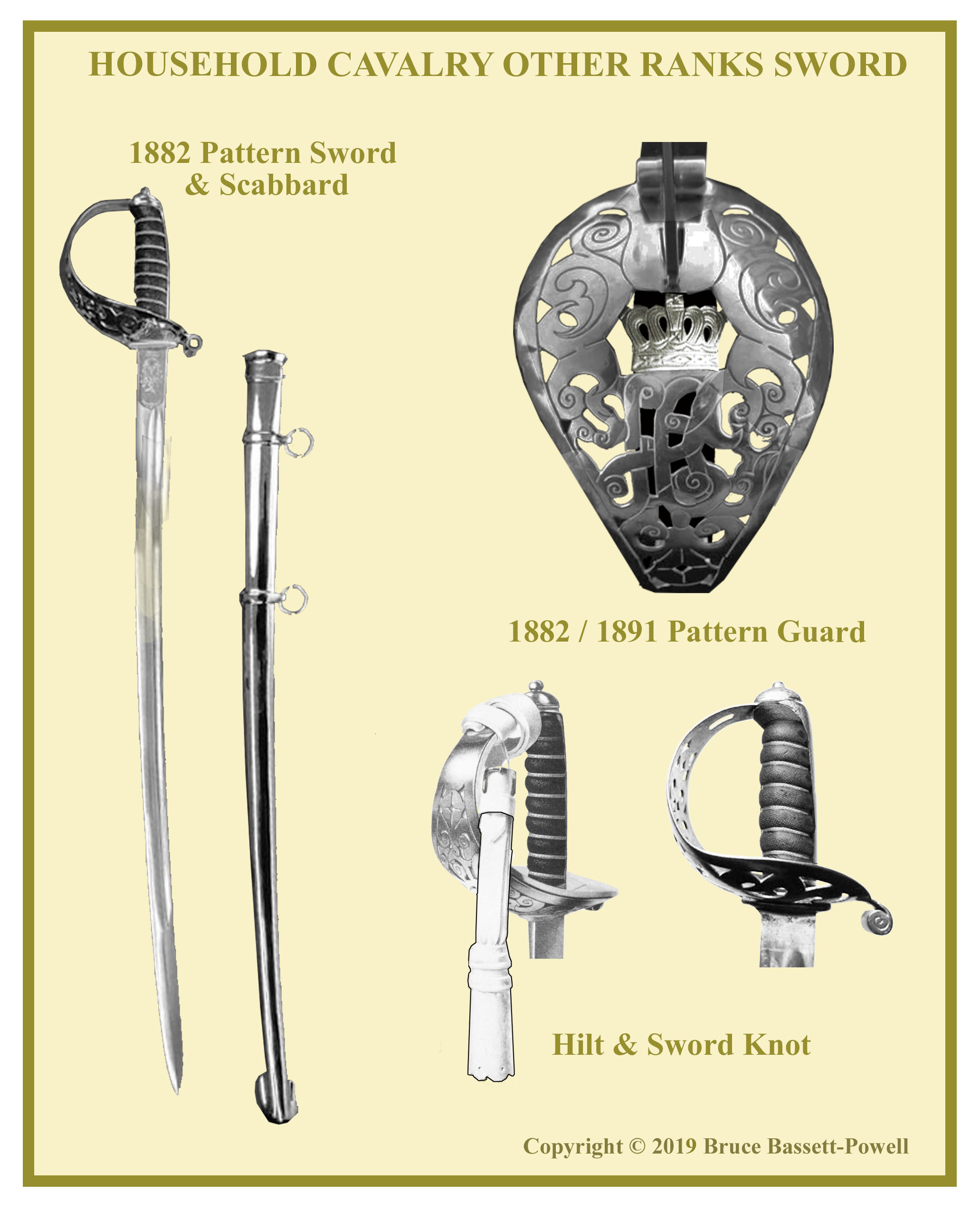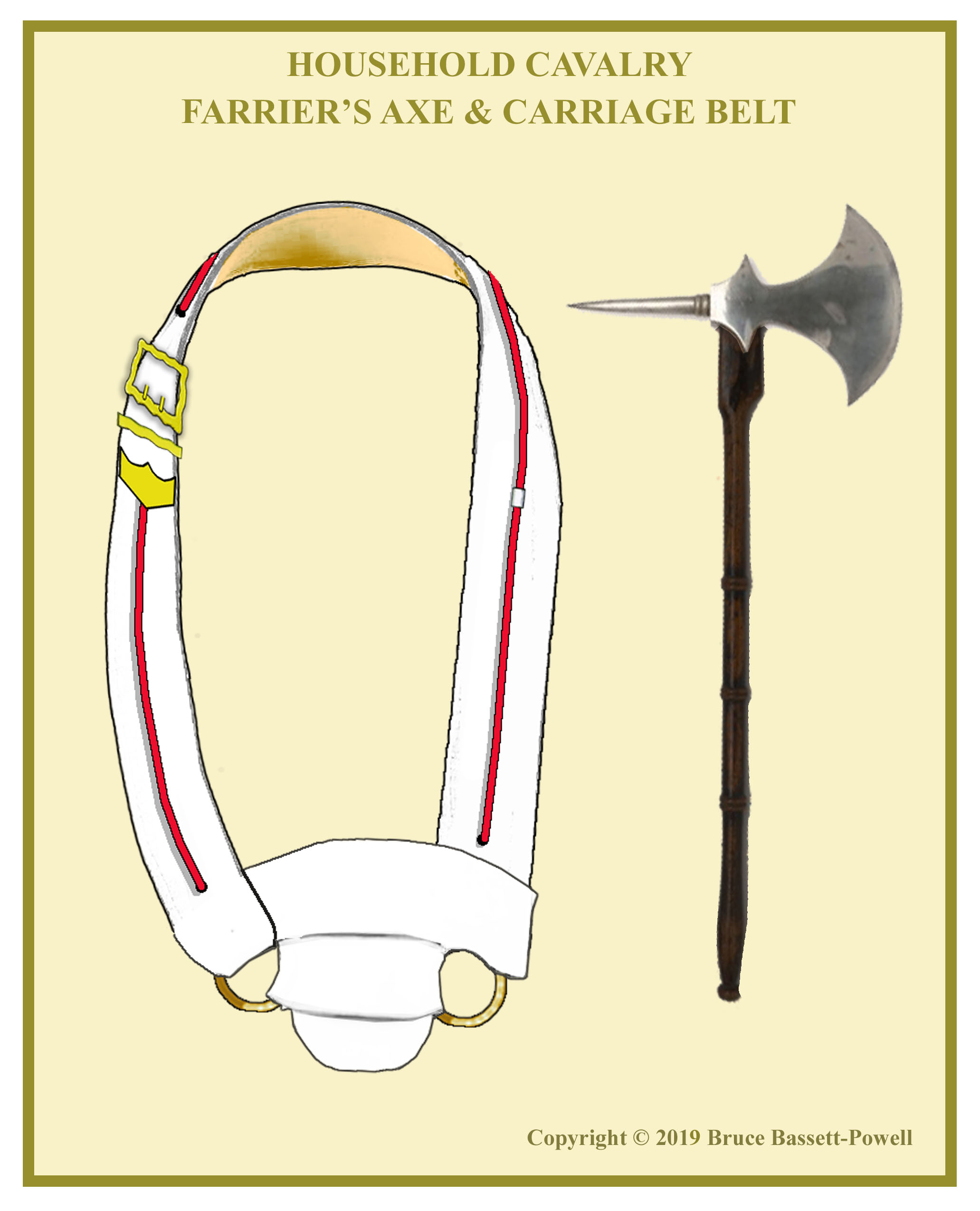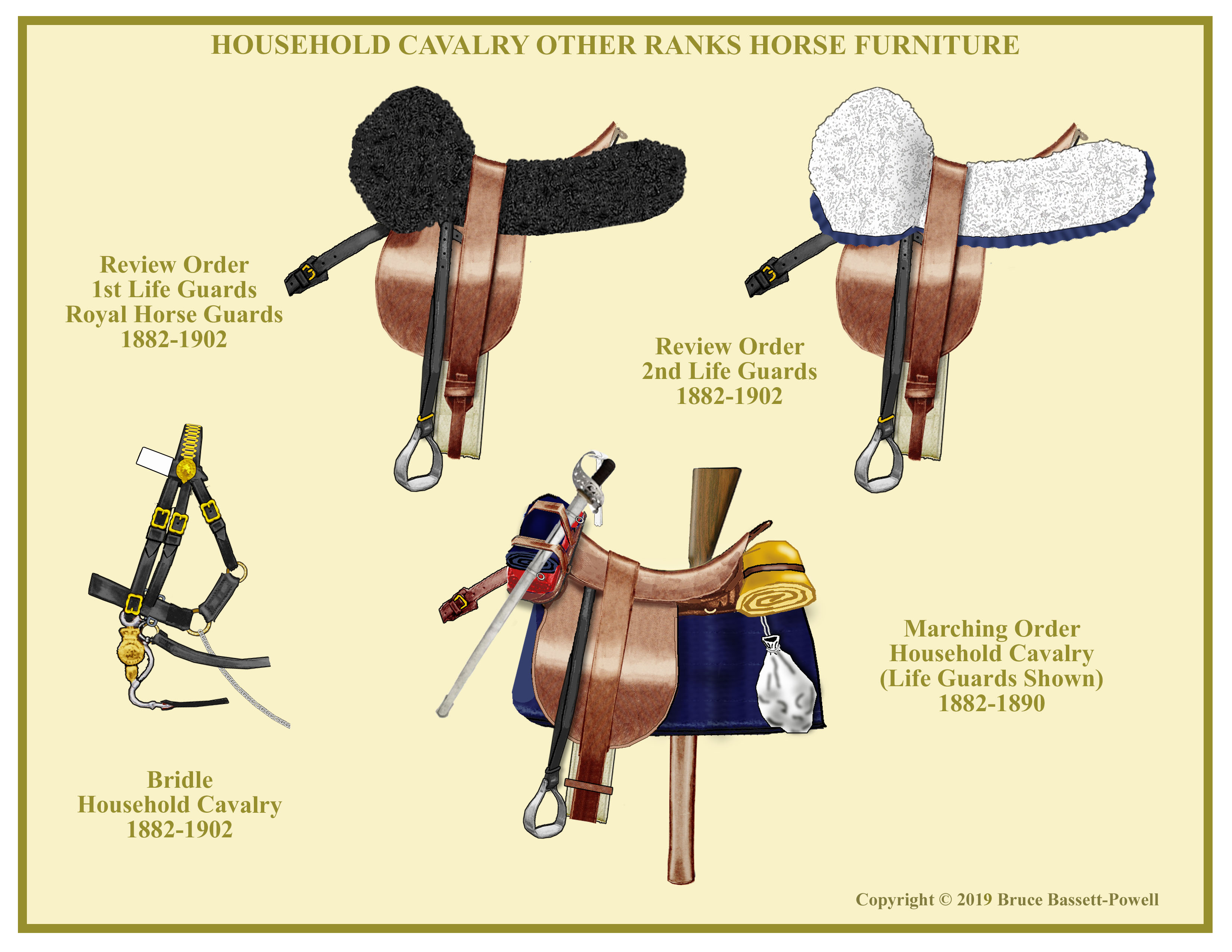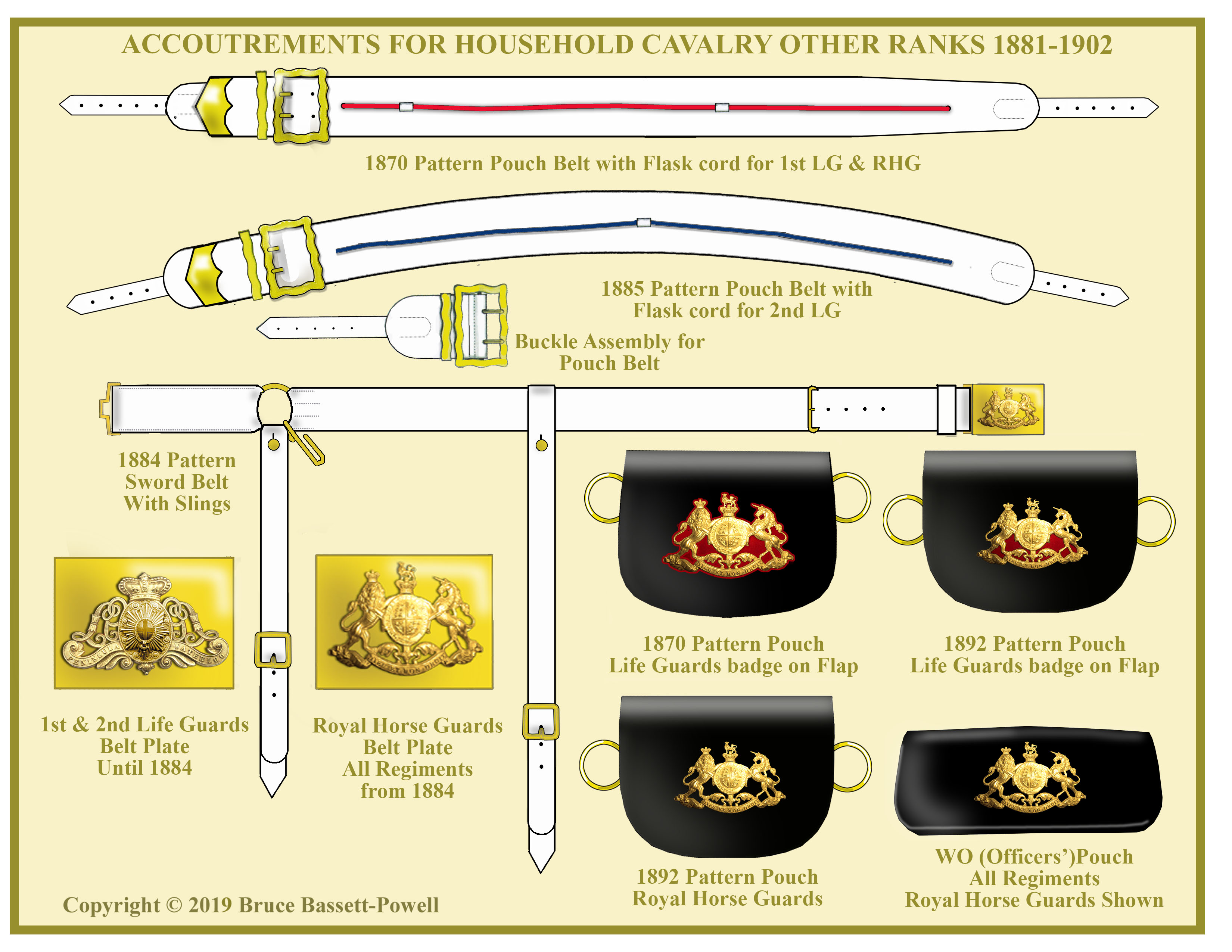HOUSEHOLD CAVALRY
OTHER RANKS
EQUIPMENT, WEAPONS & HORSE FURNITURE
PERSONAL EQUIPMENT
Pouch Belts
In 1881, the three regiments of Household Cavalry were using the 1870 pattern pouch belt. Like the regular cavalry belt, it was in two parts; the main belt and buckle assembly. It was three inches wide (an inch wider than regular cavalry). Instead of studs, the belt ends were buckled to the pouch. There were two loops for the flask cord later reduced to one, although the two loops could be seen well into the 1890s.
In 1885 the Household Cavalry, with the line cavalry, adopted the curved belt with the same fittings as used on the 1870 belt. The single loop for the flask cord was now standard.
Pouches
Household Cavalry pouches were the same as the line cavalry. On the 1882 pouch the 1st & 2nd Life Guards had the ornament of the Royal Arms in brass with a full scarlet felt backing. By the time the Mark II and Mark III pouches were adopted, the backing was only on the lower part.
The Royal Horse Guards did not have a backing to the ornament. Staff-Corporals and above used the officer’s pouch with the same ornament as the men.
Sword Belt
The 1882 and 1884 pattern belts were essentially the same. 2 inches wide and in two parts attached with a ring. The sword carriage belts were secured with a stud instead of being sewn. The belt plate was, in 1884 standardized to bear the Royal Arms for all three regiments. Prior to that the plate for the 1st & 2nd Life Guards was the same as their officers’ pattern, only plain brass.
THE HOUSEHOLD CAVALRY OTHER RANKS SWORD
Until 1882, the Household Cavalry other ranks had carried the 1848 pattern sword which was used in the Egyptian campaign and in some cases the Sudan campaign of 1885. The 1882 pattern came in two lengths, the blade on the Long was 34 ½ Inches, being carried by most of the rank and file. The Short was for bandsmen and was 32 ½ Inches long. In 1892, the sword was modified by having a white buckskin lining to the guard. The bandsmen’s sword was discontinued at this time. This is the sword still carried to this day albeit with a change of Royal Crown in the guard.
The Farrier’s Axe
This item has been carried by farriers for ceremonial occasions since the 1830s. The carriage belt is unique in that it does not have a pouch on the rear and I have never seen the Axe, either in photographs or illustrations, in the carriage.
HORSE FURNITURE
The Household Cavalry had always had their own pattern saddle. Major G. Tylden, the world’s authority on horses and saddlery, goes into great detail on the 1882 pattern saddle as described in the Army pamphlet “List of Changes in Ordnance Material”. Suffice it to say that for the most part, the differences lay in measurements and some material to the Universal pattern. Visually, the saddles would seem much the same. The Universal 1890 saddle was finally adopted in 1895.
The stirrup leathers were black. For parade and ceremonial purposes, the 1st Life Guards and Royal Horse Guards had black lambskins while the 2nd Life Guards had white ones. The Life Guards adopted white lambskins upon amalgamation and use them currently.
The bridle was of black leather with decorative brass scales on the headpiece. The arrangement of the straps are somewhat different to that of the line cavalry.
Until they adopted the Universal Pattern saddle in 1895, the Household Cavalry went on field days and manoeuvres with a different arrangement on the saddles to the line cavalry. Before 1895, they carried their swords on the waist belts because they did not have the frog / horseshoe case attachment on their saddles. One practice was to attach the sword to the straps on the wallets above the rolled greatcoat and cape.
NEXT
STANDARDS & DRUM BANNERS






